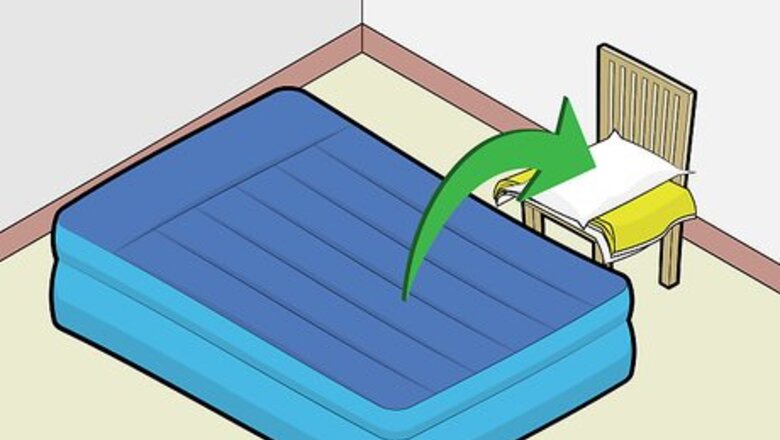
views
Inspecting the Valves
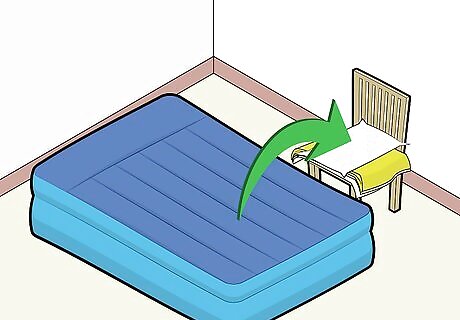
Remove sheets and bedding from the air mattress. You won't be able to see holes or tears in the mattress with the bedding on. Move the bedding to a safe place, away from the area where you will look for leaks so that its out of the way.
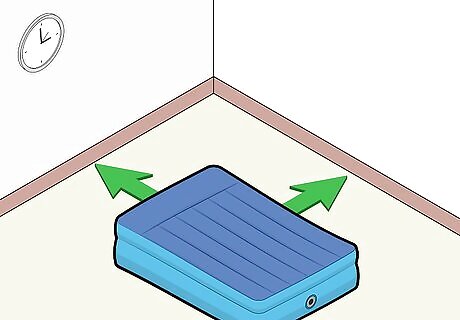
Move the air mattress to a place where you have room to maneuver. You will need to be able to walk around the mattress, flip it, and inflate it. If you are camping it is a good idea to do this inside a tent away from breezes and noise. Make sure you have adequate light. You will need to be able to see well enough to look for holes.
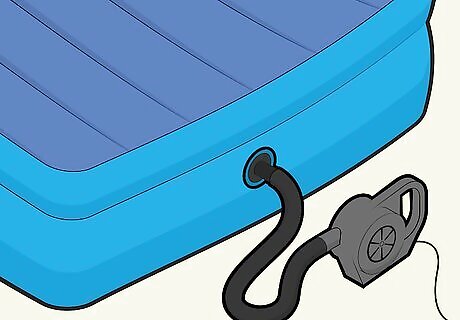
Fill it as much as you can with air, without risking the mattress bursting. Air mattresses are not designed to be filled with high pressure sources such as air compressors. You can use your breath or an air pump to inflate the mattress. Many air mattresses come with these to aid in inflation. Do not overinflate your mattress. Most manufacturers warn that this can cause a mattress to burst.
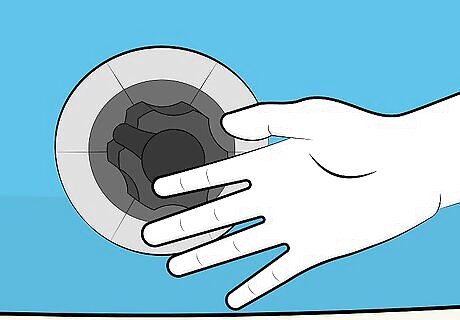
Inspect the valve. It is a good idea to do this before inspecting the rest of the mattress, because the valve is a common source of leaks. Doing this first can save you a lot of time rather than searching for leaks using other methods since valves are a main source of leaks. Make sure that the valve plug is completely inserted into the valve stem. For double locking valves, make sure that the valve stem has been completely pressed against the stop behind it. If there is a problem with the valve, it is unlikely to be able to be patched. However, if the valve plug won't seal against the valve stem you can try inserting a thin piece of plastic for a quick fix. If the valve plug is completely inserted into the valve stem, and the valve stem is completely pressed into the stop behind it, you are ready to look for a leak in the mattress itself.
Using The Dish Soap Method

Add a little liquid dish soap to a spray bottle of warm water. Mix thoroughly to ensure that you can get an even amount of soap across the whole mattress. If you don't have a spray bottle, you can use a soapy wet rag. A sponge wetted with soapy water or bubble soap will also work for this method. Save money by fixing, not replacing. "My air mattress had a slow leak, and I was ready to throw it out. But this guide walked me through some easy ways to find the hole, like using soapy water. I spotted bubbles along a seam and marked the leak. After patching it up, the mattress held air perfectly again. Following these steps saved me the cost of buying a whole new one." - Katrina D. Have fun camping once more. "A leak was ruining our camping trips since the air mattress kept deflating overnight. We brought it inside the tent and tried the soapy water trick. I couldn't believe it when I saw bubbles near the valve — we'd checked it before! Drying and patching let us finally get comfy sleep during camping again. No more waking up on the hard ground." - Joshua M. Locate teeny holes through simple techniques. "I noticed my air mattress was losing air but couldn't see an obvious leak. The tip to run my hand over it led me to feel the tiny stream of air escaping along a seam. Marking the spot let me patch up the pinhole flawlessly. It saved me the nuisance of re-inflating it and got us back to peaceful sleep." - Jhon K. Salvage belongings headed for the trash. "I almost threw out my sinking air mattress but first looked online for help. Spraying soapy water and watching for bubbles worked perfectly to reveal the leak. After drying and patching based on instructions, it held air like new. Simple techniques here salvaged an item I'd written off as trash." - Patrick Z. Have a story our readers should hear? Share it with 1 billion+ annual wikiHow users. Tell us your story here.
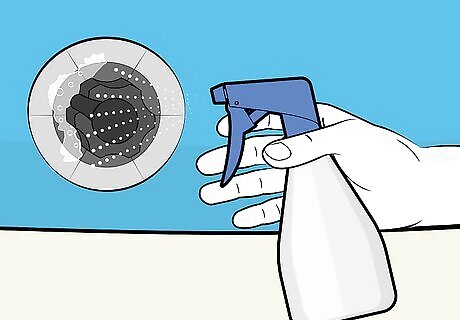
Spray or wipe around the valve first. Escaping air will cause bubbles to form on the surface. Make sure your mattress is fully inflated. Always check the valve area first with any method, as the valves are a common source of leaks. If you see bubbles near the valve, inspect it to make sure it is sealing properly.
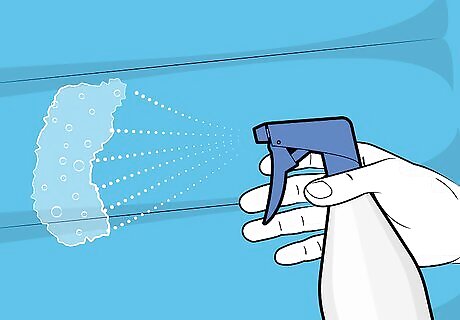
Spray the surface of the mattress systematically. Start with the seams, followed by the rest of the fabric. The leak will reveal itself with soap bubbles. Don't worry about getting soap on the mattress. This can be wiped off later and the mattress will dry.
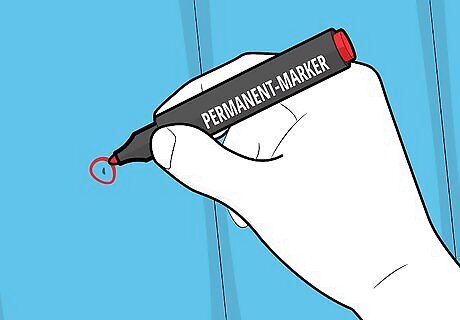
Mark the leak with a permanent marker once you locate it. Permanent marker will not bleed on the wet surface of the mattress. You might find it easier to mark the mattress if you use a towel to dry the area first. You can also use a piece of duct tape or felt marker to make your mark more clear once the mattress is dry.
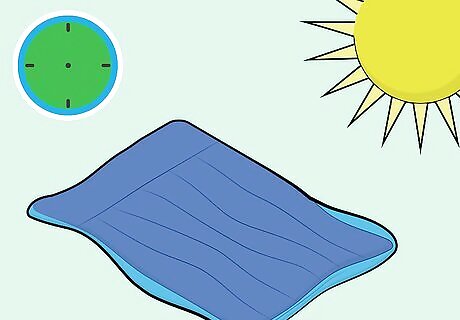
Dry the mattress in direct sunlight or in the wind for an hour or two. The seams will take the longest to dry. If you don't dry a mattress before storing it, mold or mildew can form. It is important to make sure it is 100% dry before you put it away. Before you can use any kind of adhesive patch to repair your mattress, it must be 100% dry.
Inspecting the Air Mattress
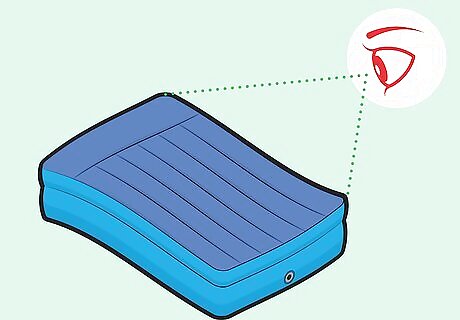
Inspect the air mattress visually. You should do this with the mattress still fully inflated. Even a pinhole can become visible when a mattress is inflated. Do this in an area where you have plenty of light. Do this systematically. First, inspect the top of the mattress, then the sides, than the underside. Make sure you visually inspect the seams of the mattress, as this is a common area for tears.

Move the palm of your hand slowly along the surface of the mattress. Often, you may feel the escaping air "brush" against your skin. You can wet your hand with cold water first. Escaping air will increase the evaporation rate from your skin and make it feel colder. Pass your hand slowly along the surface of the mattress. If you move too quickly, you might not pick up on the subtle sensation of escaping air.

Apply pressure to the mattress with your hand and listen for leaks. Move your head along the surface with your ear near the mattress. Your ear is more sensitive to feeling escaping air. Escaping air will also make a hissing sound. Listening for escaping air is more effective in finding large holes or leaks rather than small ones. Listen especially carefully around the seams of the mattress, as this is the most common area for leaks.
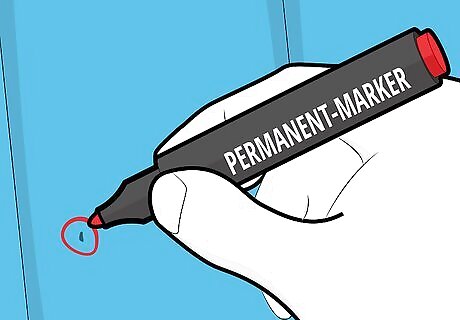
Mark the leak with a pen or piece of tape. You will then be able to locate the leak when you go to patch it. Some manufacturers will provide instructions on how to patch a leak. Others will ask that you send the mattress to them for repair. Don't attempt to patch your mattress without proper instructions from the manufacturer. Different materials may require different methods. Once you locate one leak, inspect the rest of the mattress. There may be more than one hole or tear contributing to the problem.
Submerging Your Mattress
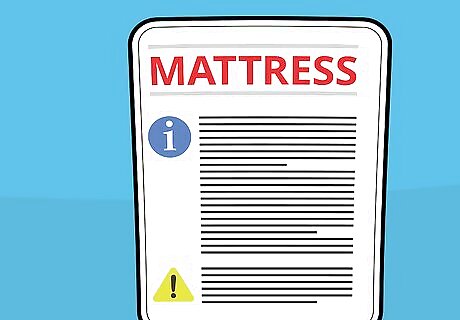
Check the label of your air mattress. Some manufacturers recommend that you do not submerge their products. Submerging an air mattress puts it into contact with a lot of water. Fabric may become saturated. Once an air mattress is saturated with water, seams may begin to deteriorate. Protective coating on synthetic fabrics may also begin to separate from the fabric.
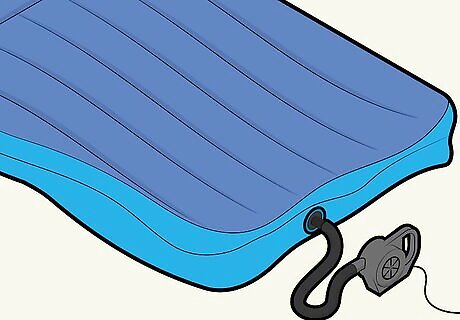
Partially inflate the mattress with air. If it is not at least partially inflated, you you not be able to see air escaping under water. Fully inflating the mattress may make it very difficult to submerge in a pool or bathtub.
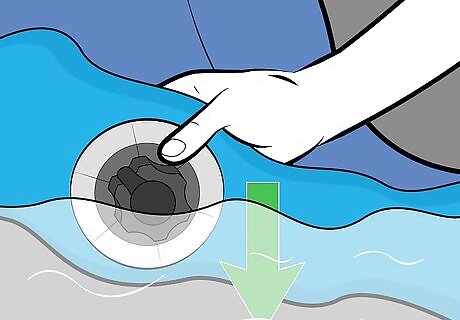
Submerge the valve stem in a pool or bathtub filled with water with the valve closed. Apply pressure around the valve stem. See if you can force any air out of the valve. Escaping air will cause a stream of bubbles to form around the leak. Look for these around the valve as you apply pressure. Submerge parts of the fabric under the water. Look for bubbles, indicating escaping air from a leak. Do this in sections. Looking at a smaller area is easier than trying to find leaks in the whole mattress at one time. Pay close attention to the areas around the seams. Seams are a common area for holes and tears to occur. Mark the leak with a permanent marker once you find the source. Permanent marker is less likely to bleed on a wet surface. You can partially dry the area around the leak with a towel to aid in marking the leak. Once the mattress is dry you can make your mark more clear by placing duct tape or a larger mark near the leak.
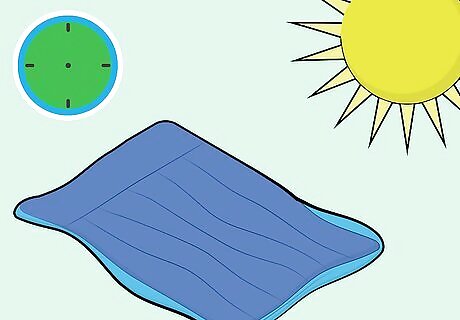
Dry the mattress in direct sunlight or in the wind for an hour or two. The seams will take the longest to dry. If you don't dry a mattress before storing it, mold or mildew can form. It is important to make sure it is 100% dry before you put it away. Before you can use any kind of adhesive patch to repair your mattress, it must be 100% dry.
Using the Garden Hose Method
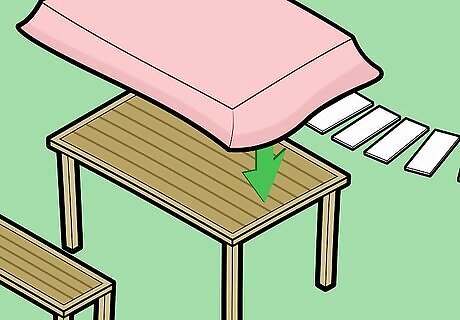
Use an outdoor table to do this method. If your table is wooden, cover it with a blanket, newspapers, or a vinyl tablecloth. It can be a nuisance to get a wood table too wet. This method requires the use of a hose and a good deal of water. You can also use a deck or patio to do this method. If you are working on a wood surface, make sure it is covered.
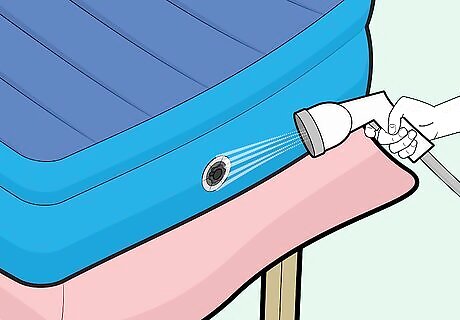
Hook up a garden hose and "flood" the area around the valve with water. Move slowly, as a leak could only be visible for a few seconds. Concentrating on looking for bubbles where the water is running. Bubbles escaping around the valve area can indicate there is a leak in the valve. Inspect the valve to make sure it is sealed properly.
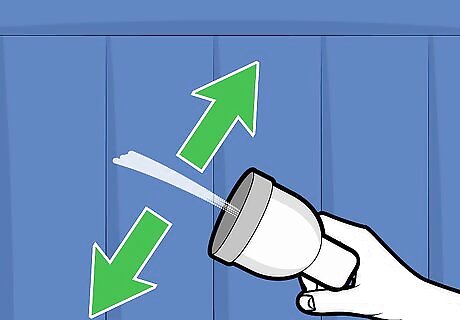
Flood the rest of the surface of the mattress with water. Use a small stream of water and work slowly. Concentrate on looking for streams of bubbles escaping from a leak in the mattress. Look closely around the seams for bubbles. This indicates escaping air and seams are common sites of tears and holes.
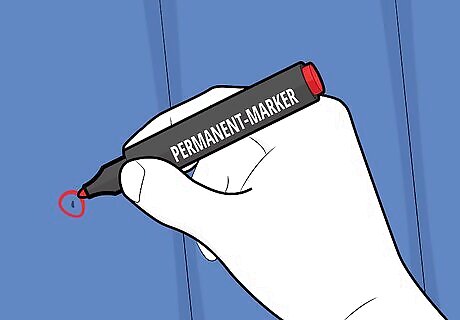
Mark the leak with a permanent marker once you find the source. Permanent marker is less likely to bleed on a wet surface. You can partially dry the area around the leak with a towel to aid in marking the leak. Once the mattress is dry you can make your mark more clear by placing duct tape or a larger mark near the leak.
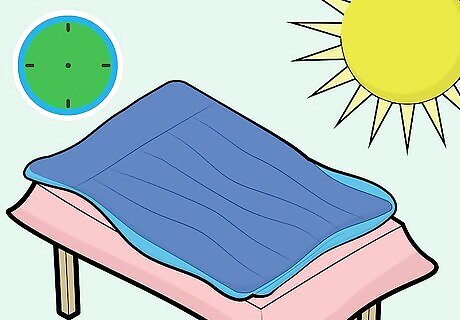
Dry the mattress in direct sunlight or in the wind for an hour or two. The seams will take the longest to dry. If you don't dry a mattress before storing it, mold or mildew can form. It is important to make sure it is 100% dry before you put it away. Before you can use any kind of adhesive patch to repair your mattress, it must be 100% dry.


















Comments
0 comment